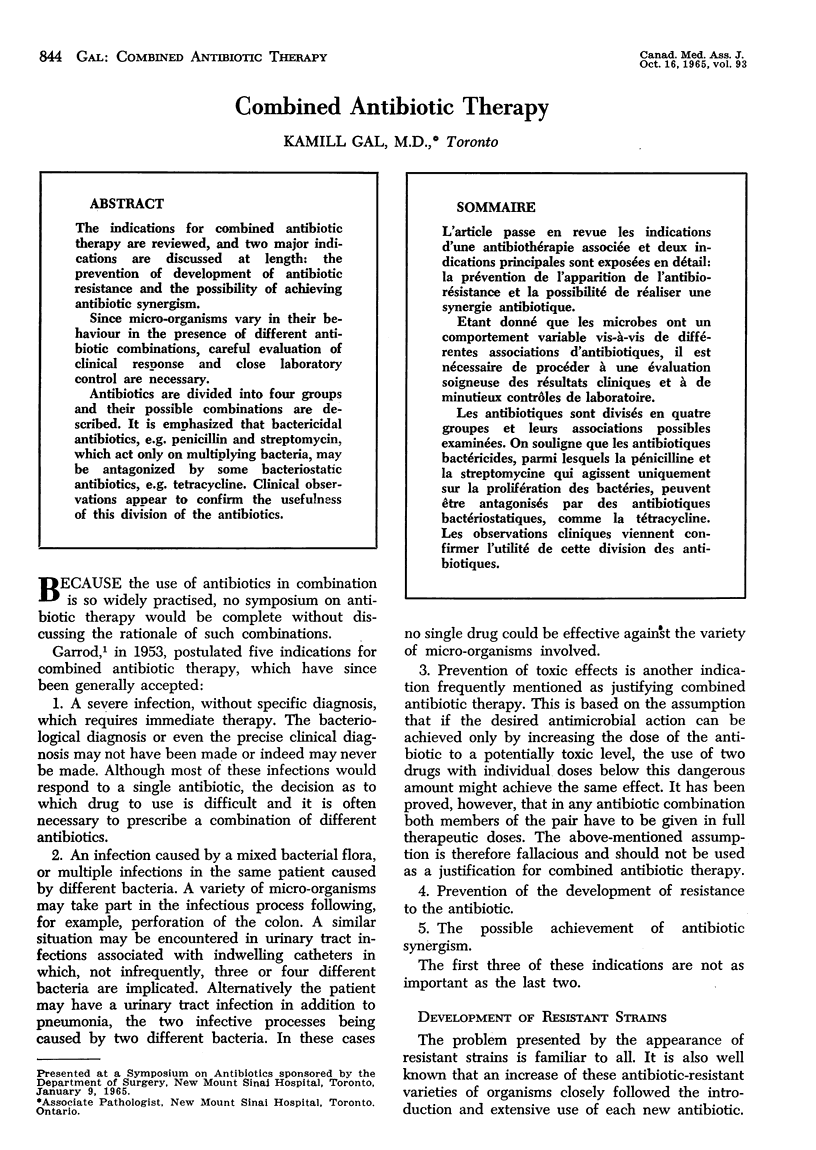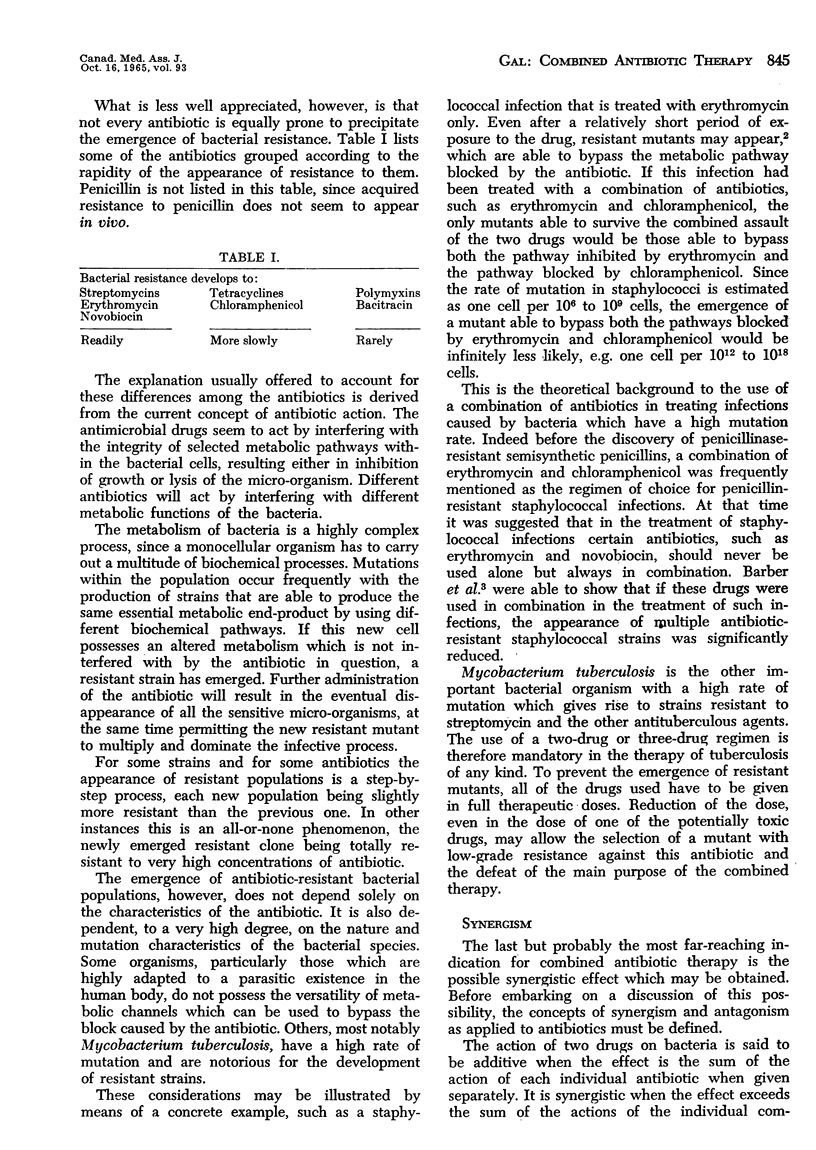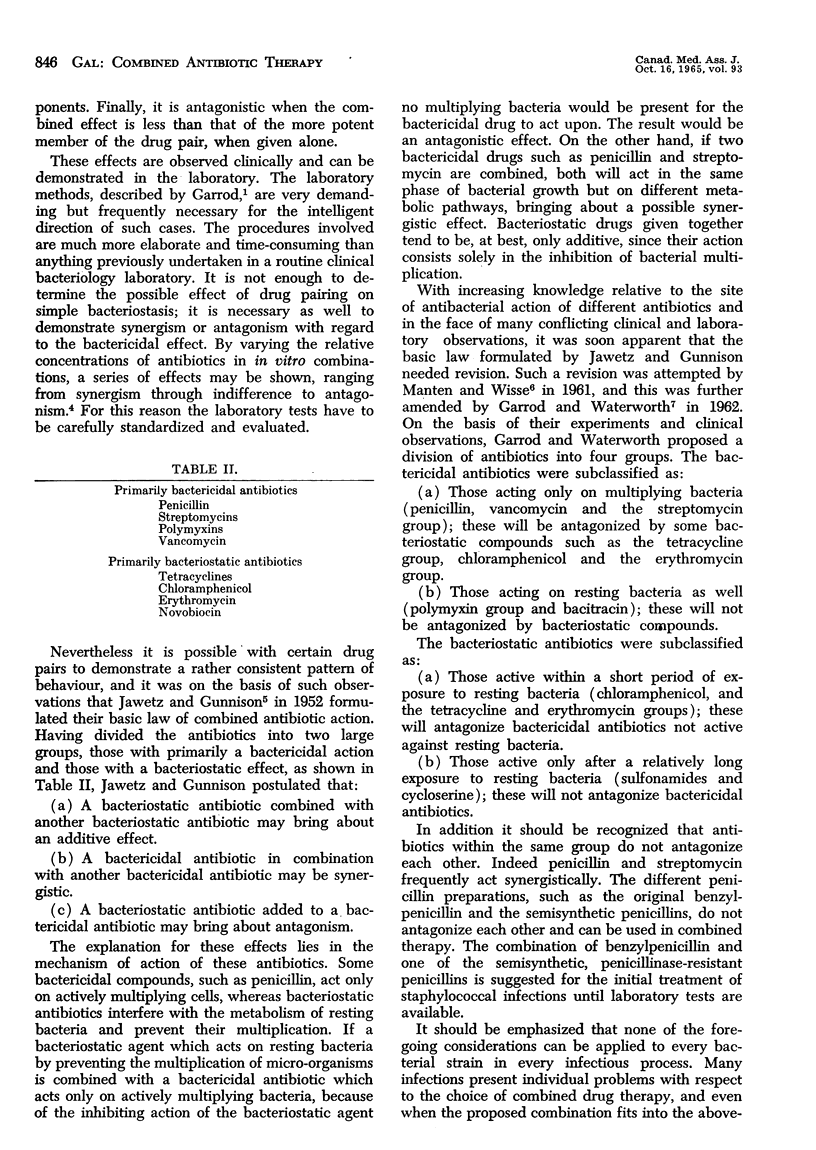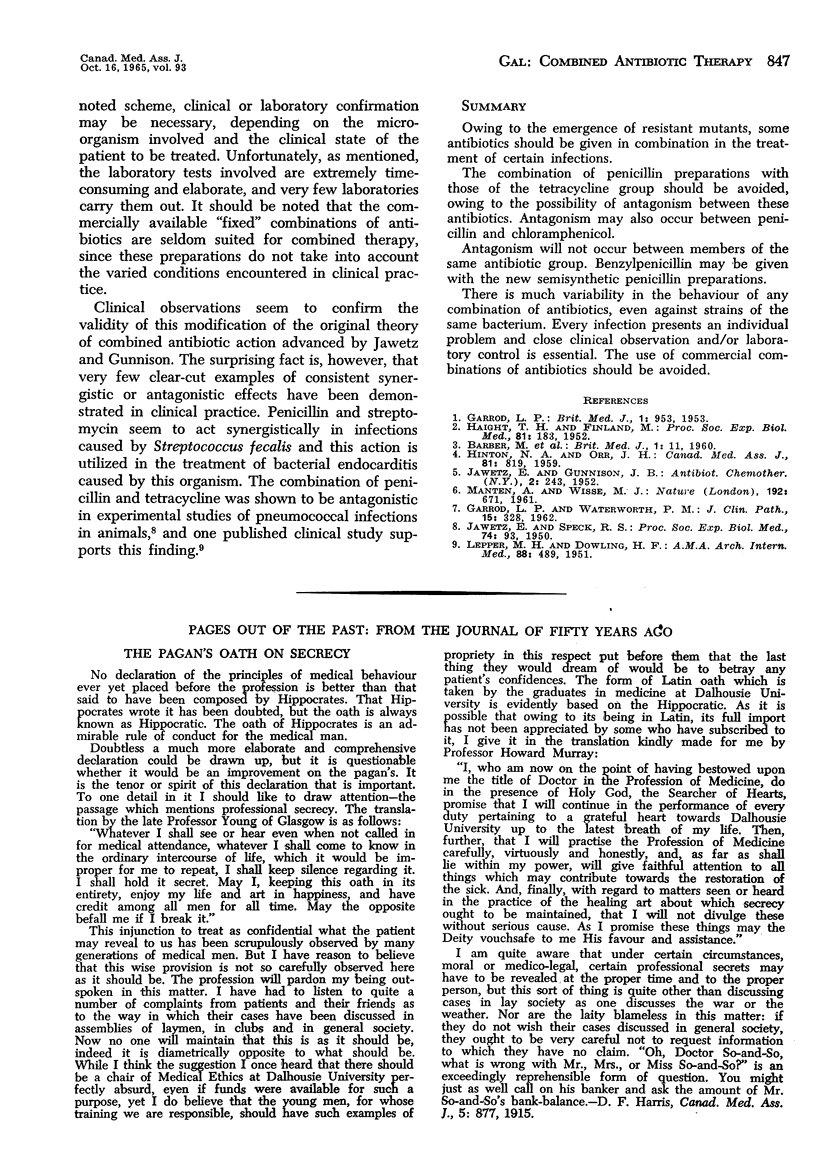Abstract
The indications for combined antibiotic therapy are reviewed, and two major indications are discussed at length: the prevention of development of antibiotic resistance and the possibility of achieving antibiotic synergism.
Since micro-organisms vary in their behaviour in the presence of different antibiotic combinations, careful evaluation of clinical response and close laboratory control are necessary.
Antibiotics are divided into four groups and their possible combinations are described. It is emphasized that bactericidal antibiotics, e.g. penicillin and streptomycin, which act only on multiplying bacteria, may be antagonized by some bacteriostatic antibiotics, e.g. tetracycline. Clinical observations appear to confirm the usefulness of this division of the antibiotics.
Full text
PDF





